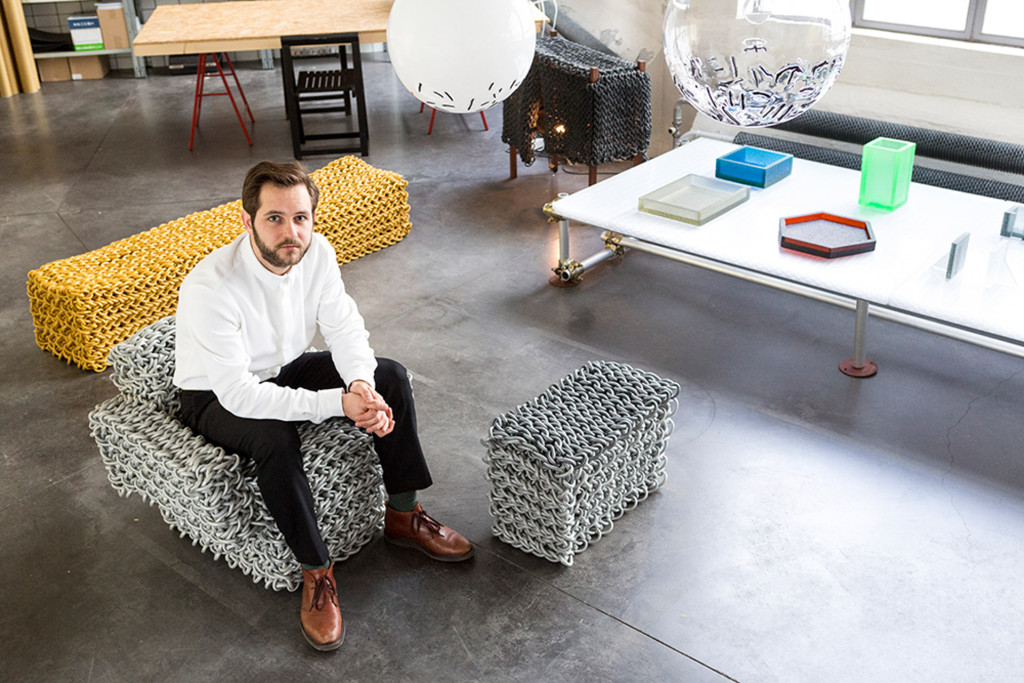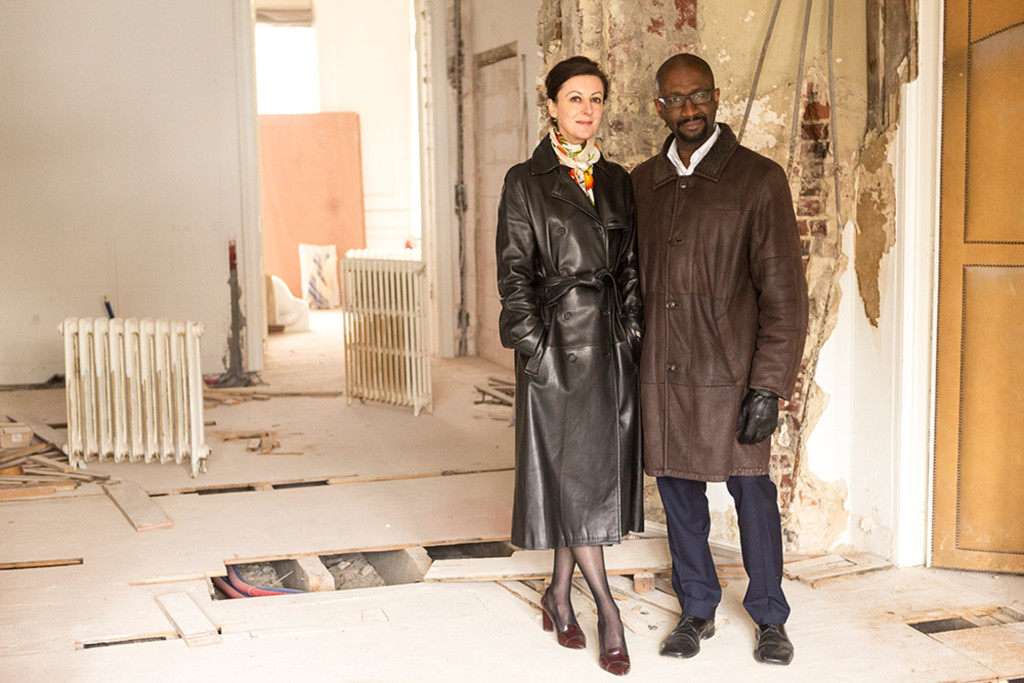Nicolai Hartvig explores the city’s burgeoning design gallery scene.
Brussels is Bustling
-
Gallery Caroline van Hoek
© Stefano Candito for L'AB/Pamono
-
Gallery Caroline van Hoek
© Stefano Candito for L'AB/Pamono
-
Gallery Caroline van Hoek
© Stefano Candito for L'AB/Pamono
-
Gallery Caroline van Hoek
© Stefano Candito for L'AB/Pamono
-
Gallery Caroline van Hoek
© Stefano Candito for L'AB/Pamono
-
Gallery Ampersand
© Stefano Candito for L'AB/Pamono
-
Gallery Ampersand
© Stefano Candito for L'AB/Pamono
-
Gallery Ampersand
© Stefano Candito for L'AB/Pamono
-
Gallery Ampersand
© Stefano Candito for L'AB/Pamono
-
Gallery Ampersand
© Stefano Candito for L'AB/Pamono
-
Gallery Ampersand (the future location under construction)
© Stefano Candito for L'AB/Pamono
-
Gallery Victor Hunt
© Stefano Candito for L'AB/Pamono
-
Gallery Victor Hunt
© Stefano Candito for L'AB/Pamono
-
Gallery Victor Hunt
© Stefano Candito for L'AB/Pamono
-
Gallery Victor Hunt
© Stefano Candito for L'AB/Pamono
-
Gallery Pierre Marie Giraud
© Stefano Candito for L'AB/Pamono
-
Gallery Pierre Marie Giraud
© Stefano Candito for L'AB/Pamono
-
Gallery Pierre Marie Giraud
© Stefano Candito for L'AB/Pamono
-
Gallery Pierre Marie Giraud
© Stefano Candito for L'AB/Pamono
-
Gallery Pierre Marie Giraud
© Stefano Candito for L'AB/Pamono
At even a cursory glance, it’s clear that something is happening in Brussels—though ask any of the city’s design galleries, and they will be hard-pressed to say exactly what it is.
Several of them are on the move. Victor Hunt is preparing to leave its ample factory-loft space in the rough-and-tumble neighborhood around the Gare du Midi, graduating to uptown chic and proximity to the city’s big name contemporary art dealers. Mainstay Pierre Marie Giraud also moved north back in 2011, leaving the antiques and tribal art district around the scenic Sablon square.
The Sablon is not left empty, however. In September, the dynamic interior design writer-photographer duo Barbara and and René Stoeltie opened their first venture, The Gemini Art Gallery, there. And between the two neighborhoods, the curatorial-centric Ampersand House is taking apart its final exhibition before moving to a more permanent home, 10 minutes down the road.
Freedom appears to be the main attraction for the galleries, in the absence of a strong design market in Brussels. “I love it here, even though I know it’s a weird city,” says Alexis Ryngaert, the founder of Victor Hunt. “Brussels is one of the few cities where you have ultimate freedom; where you can still really do whatever you want, as long as you don’t harm anybody else. It’s slightly anarchic.”
The capital’s rich heritage of Art Nouveau and Art Deco architecture is still revered—as evidenced by a sold-out, four-weekend Biennale in October touring its finest points—but it has not spawned much follow-through interest in contemporary or vintage design. Most galleries here thrive through ties to international clients and connections made at international fairs.
“The public interest is almost nothing,” says Ryngaert. “In Belgium, they care about the fashion industry and that is it. They don’t realize that we have a major history in object design as well. If you go back exactly 100 years, there wasn’t a more innovative country when it came to interior design. Only a few elements stand out and have been retained by history.” It’s a trend also seen at Ampersand House, where Belgian clients are often very attached to Jules Wabbes, the mid-20th century furniture designer and interior architect heralded in an exhibition at the Palais des Beaux Arts earlier this year.
In terms of contemporary design, the scene here is young, but galleries are fast coming of age. Launched as recently as 2005, Pierre Marie Giraud is already a senior in the city’s design landscape. The gallery was subsequently invited to show at TEFAF in Maastricht in 2010. The idea for Victor Hunt, the gallery named after a fictional character, was birthed in 2008. Ampersand House was conceived in the summer of 2010, and, like Victor Hunt, only truly became active after a yearlong preparation period. The more established they’ve become, though, the further uptown they’ve moved.
Caroline Van Hoek, a jewelry design specialist who opened her uptown gallery in 2007 in a former grocery (to which her exterior still pays homage) near contemporary art dealers Xavier Hufkens (and, since 2009, Almine Rech), says the recent moves have been a boon. “Even on rainy afternoons we have passers-by,” she says. “Since I’m established in an art gallery area, I’ve developed a client base of art collectors who often did not know anything about this type of jewelry. Within that group, some buy to really wear it, while others buy it as an object, to hang on the wall or put in a cabinet, to look at it and cherish it.”
Within the scene, the city’s leading galleries have taken quite different paths.
Victor Hunt
Victor Hunt is now both a gallery and a fully engaged production house with a strong bent towards cerebral contemporary design and the grey area at the intersection of art and design. Production is a double positive for the gallery, taking some practical pressure off the designer while ensuring quality control for the collector.
“I really want to make objects that can last for centuries,” says Ryngaert, sitting in a large office space full of prototypes that used to be his apartment. “We’re about making good things.”
Jon Stam is the most recent artist to join Victor Hunt. The gallery’s most edgy designers, though, may be the Stockholm studio Humans Since 1982, whose kinetic creations have been Ryngaert’s “most challenging but also most rewarding project.” From the first Clock Clock pieces, the gallerist remembers the struggle. “They were square, you had to stack them all yourself, the wires went through the back, the engines were way too powerful and almost broke everything down. Software-wise, it was a disaster to program.” Today, the process has yielded the hypnotically expansive A million times system of 288 interconnected clocks, and “everything just gets better and better.” The work has also been commercially successful, accounting for some 25-33 percent of the gallery’s annual revenue. “Each time we sell A million times, it’s a reason to celebrate,” Ryngaert says.
Pierre Marie Giraud
Uptown, Pierre Marie Giraud also straddles the art and design worlds, not least through showing Sterling Ruby’s stoves, quilts, and ashtrays, or Ron Nagle’s playful Odd Ball series. The gallery represents artists working in glass, ceramics, and silver and collaborates with contemporary designers to produce unique and limited-edition objects. Giraud’s minimalist gallery, featuring a living wall at its entrance, is perhaps the city’s sleekest design space.
Ampersand
Ampersand House is a charming counterweight to the white cube, and a curatorial project in its own right. In addition to serving as a showcase for vintage design—whether Scandinavian, Italian, Brazilian, Dutch, Belgian, or early 20th century American—it’s also the home to its driving force, the couple Kathryn Smith and Ike Udechuku.
Walking into the current neoclassical space, the vast, curving staircase and high ceilings make room for a stunning rosewood bench by Swiss-born British architect Richard Seifert. As many as 200 ceramic pieces once filled the staircase wall. Pieces by Finn Juhl (an NV-45 two-seater bench that the couple refashioned from its bare frame), Bruno Mathsson, and Joaquim Tenreiro have appeared in the house.
The new Ampersand House will actually be one that Udechuku and Smith bought when they first arrived in the city, with a traditional Brussels-style three-room interconnectedness and Art Nouveau windowpanes opening onto a garden.
Explaining the rationale behind setting up shop in Brussels, Udechuku says, “You would have to look long and hard to find this configuration of space in Paris or London—and once you found it, you sure couldn’t afford it,” says Udechuku. He goes on, “We put ourselves next to a two-sided mirror, where people see our home, our personalities, and the pieces. It’s not always clear where the business starts and the couple living here ends.”
Ampersand House offers perhaps more inspiration than individual works, synching with Udechuku and Smith’s design consultancy. The feeling is layered and warm, as pieces are presented in unexpected relation to one another—from a four-meter long shelving system to Wouter Dam’s twirling ceramic objects and Pierre Paulin’s Oyster chairs. Recently, other gallerists have increasingly been asking for an Ampersand House intervention in their own spaces.
The couple also works with contemporary local designers such as Benoît Deneufbourg or Nathalie Dewez to make bespoke pieces, and they have an extensive list of artisans ready for restoration jobs. “We have a lot of involvement in bringing things back to life,” says Smith. “It never interested either of us just to be a dealer in the classic sense.”
Caroline van Hoek
On a dry but cold afternoon, Caroline Van Hoek introduces the work of Peter Bauhuis—silver, gold, and copper vessels and rings made by single-pour, lost-wax casting. The shapes are delicately rough and uniquely intricate, with the insides of the rings showing the canal structure of the artist’s sculpted molds. “The vessels and jewelry are inseparable; one influences the other,” Van Hoek says, noting that even if she shows non-jewelry items, there must be a rationale for doing so. “I would never show someone making vessels who had no link to jewelry.”
Some of her artists experiment with shapes and materials as much as concepts and social statements. The young Italian artist Beatrice Brovia was inspired by the embellishing aesthetics of medals in the sports world, and their role as a symbol of passion for a discipline. For her brooches, she uses resin, marble, plaster, and even part of a swimming cap, threaded with silver. One work, entirely in plastic, references the value of a sportswear brand logo in street culture.
Half of Van Hoek’s clients are Belgians, and she sees differences in international collecting styles. “In Europe, you have jewelry collectors, but more in the field of costume jewelry, antiques, or ethnic jewelry,” she says. “Maybe some of my clients will turn their acquisitions into obsessions and want to increase their collections. But I don’t consider them to be jewelry collectors.”
Convincing traditional pearl buyers of the value of designer jewelry has also been challenging. “When your child makes you a necklace from pebbles on the beach, it can be worth much more to you than the pearl necklace,” she notes. “So why not see something made by an artist as more valuable than a simple, mass produced gold necklace?”
The clients are “everywhere, except in Belgium,” says Victor Hunt’s Ryngaert, with a laugh. “There are three or four important contemporary design collectors—whose names I won’t mention, because they like their privacy. It comes with being Belgian; you don’t stand on the rooftops and shout ‘look at my collection.’ They’re very serious and they have some of the most impressive collections I’ve ever seen in my life. But they will take their time to make sure that you are really up to the level that they expect; they want to see you do well abroad. So it takes a while before they become your clients.”
Even as Brussels has rapidly internationalized, a Belgian design wave remains elusive. “We don’t really have a national identity, except for moules-frites (mussels and fries), and chocolate,” Ryngaert says. “This is not a one-community country. But there is something going on in Brussels.”
-
Text by
-
Nicolai Hartvig
A multi-faceted Dane, Nicolai writes about art, design and culture for the International Herald Tribune and Art+Auction—when he’s not covering EU and NATO diplomacy from Brussels. He’s not-so-secretly nostalgic for modernist architecture.
-
-
Images by
-
Stefano Candito
At home everywhere, Stefano grew up in Italy and—after Germany, China and the U.S.—he now lives in Paris. Architecture and people are unquestionably the muses of his work.
-





















 Victor Hunt
© Stefano Candito for L'AB/Pamono
Victor Hunt
© Stefano Candito for L'AB/Pamono
 Pierre Marie Giraud
© Stefano Candito for L'AB/Pamono
Pierre Marie Giraud
© Stefano Candito for L'AB/Pamono
 Kathryn Smith and Ike Udechuku from Ampersand
© Stefano Candito for L'AB/Pamono
Kathryn Smith and Ike Udechuku from Ampersand
© Stefano Candito for L'AB/Pamono
 Gallery Caroline van Hoek
© Stefano Candito for L'AB/Pamono
Gallery Caroline van Hoek
© Stefano Candito for L'AB/Pamono

